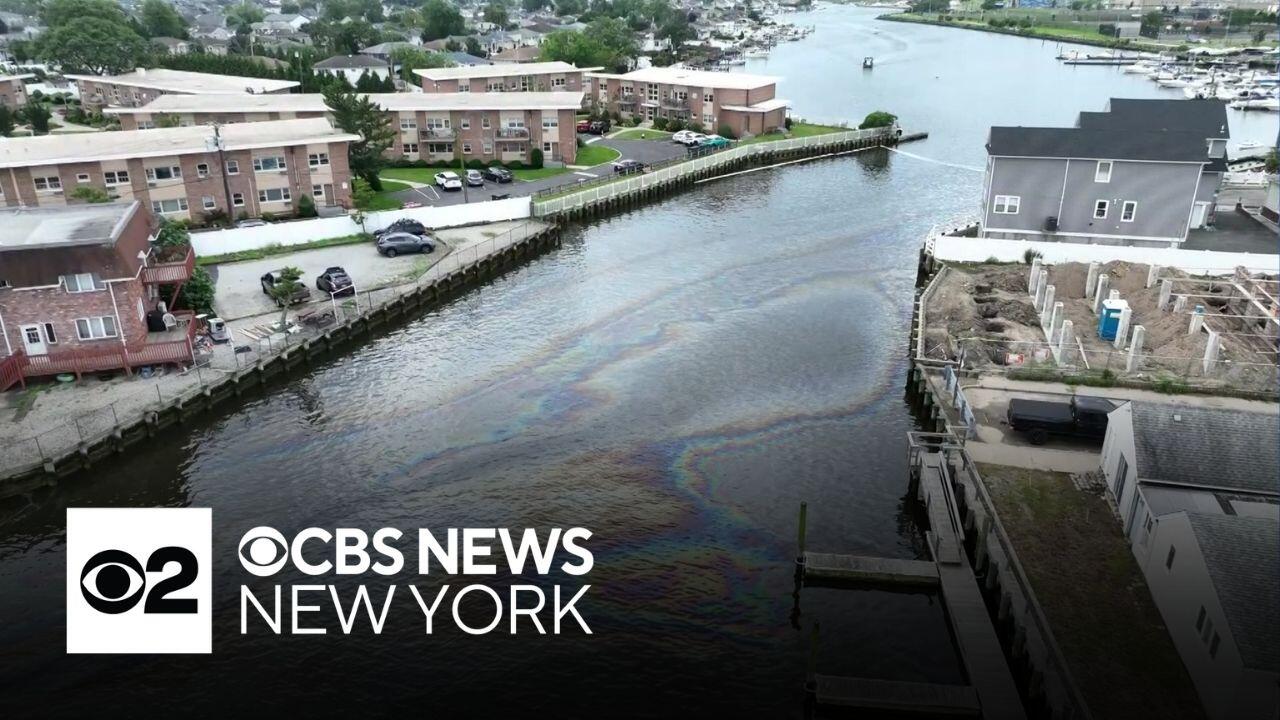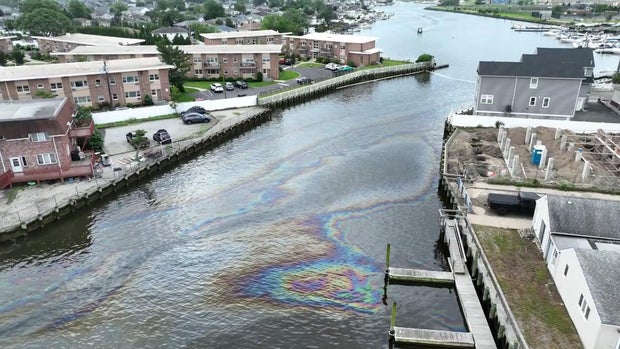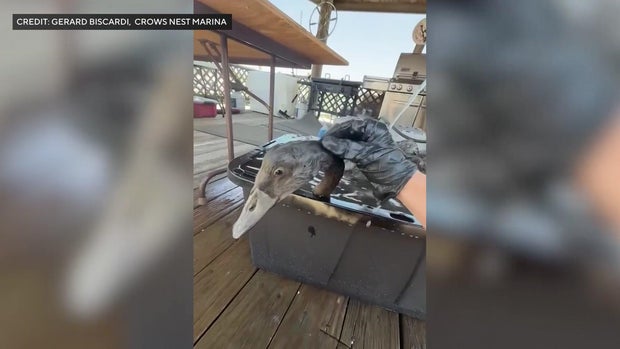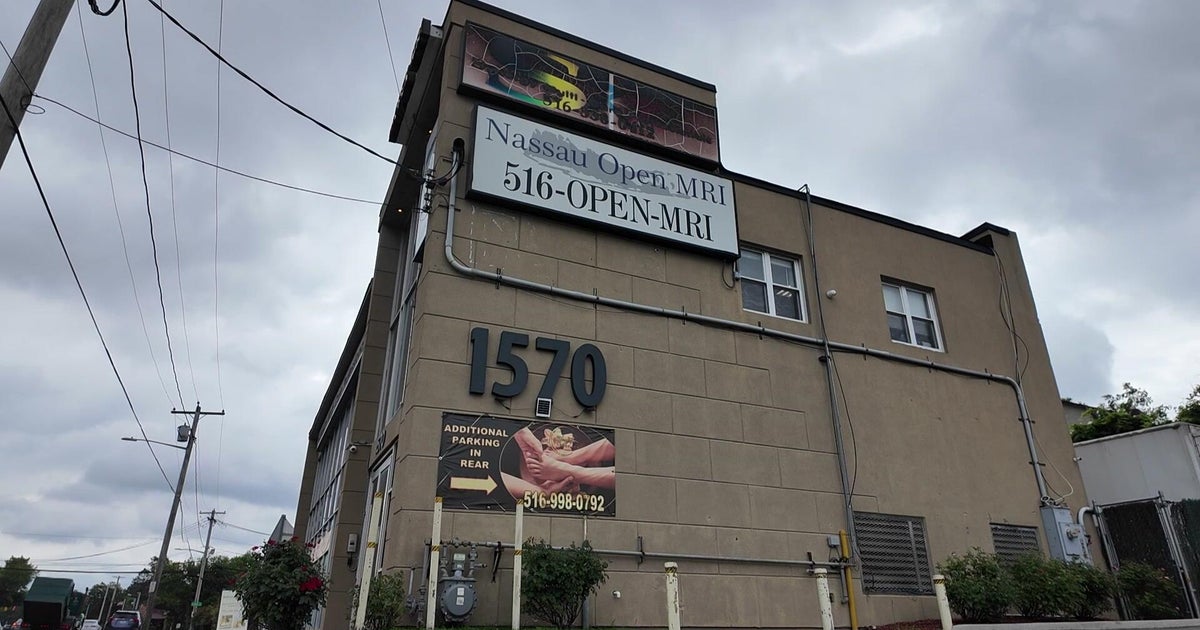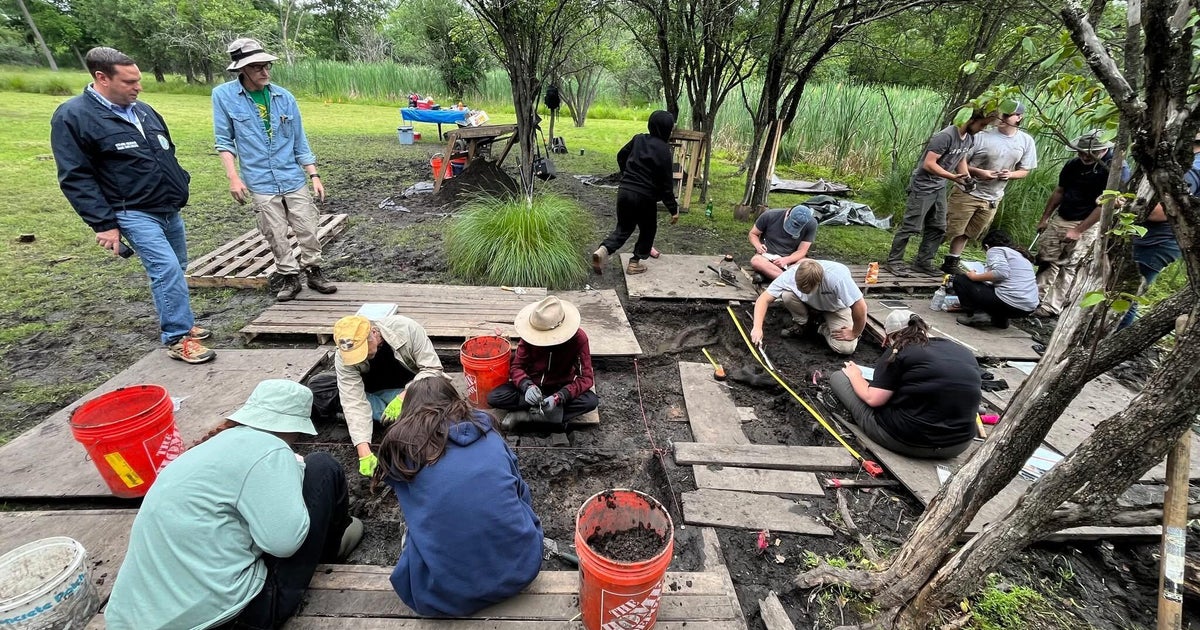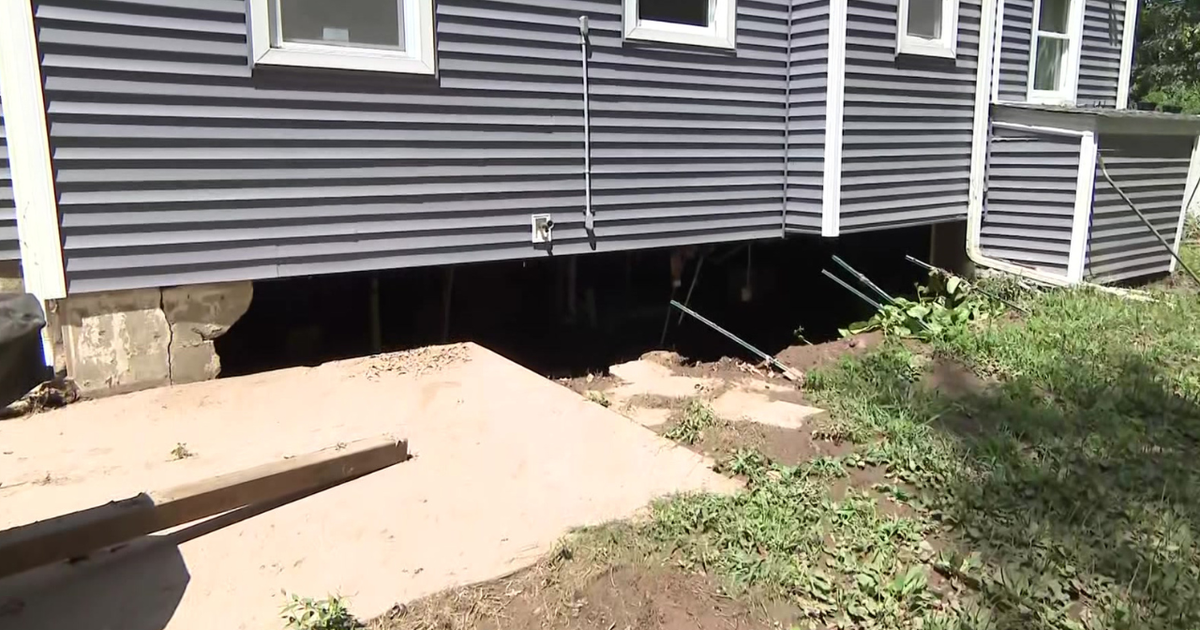Oil spill in Long Island's Mill River forces around-the-clock environmental cleanup
Oil has stopped flowing into Long Island's Mill River, but not before an estimated 1,000 gallons of greasy fluid leaked into the waterway that leads to the Atlantic Ocean.
It was all hands on deck as PSEG Long Island contractors kept working to contain the spill Thursday in East Rockaway after an underground electrical transmission cable surrounded by a cooling oil started leaking Monday.
Hundreds of gallons of oil leak into Long Island river
With state oversight, PSEG Long Island contractors removed hundreds of gallons of oily water and set up containment booms in the East Rockaway Channel after fluid leaked into the Mill River.
"Literally, it looks just like a rainbow on the water and you can see the oil," Joey Leggio, an Oceanside boat captain, said.
"A lot of people used to go swimming here. Now, how are you going to go swimming in this water now?" Dominic Decrescenzo, of East Rockaway, said.
PSEG Long Island said the source of the dielectric fluid leak was discovered Wednesday night. The fluid is similar to mineral oil, which is nonhazardous, the utility said.
The flow of fluid was stopped and crews started repairing the cable, the utility said.
Crews wash swans and ducks
Environmental crews also took time to wash off greasy swans and ducks. Though the fluid was deemed nonhazardous, at least two ducks died and good Samaritans have been finding other injured birds.
"Any sort of foreign substance on a bird's feathers is extremely hazardous to them. It negates their ability to control their own temperature, it stops them from being buoyant. So that they can sink down into the ocean and actually drown," John Di Leonardo, with Humane Long Island, said.
"It's a shame. It's really sad, these poor birds," Leggio said.
Several Long Island rescues, including the Wildlife Center of Long Island and Sweetbriar Nature Center, have stepped up to help rehabilitate the birds.
PSEG Long Island also said it understands residents' concerns about the cleanup and that it was working to address the issues, while emphasizing the fluid is not hazardous.
PSEG Long Island statement on Mill River fluid leak
The utility's full statement is as follows:
On Monday, July 14, PSEG Long Island removed an underground transmission cable from service because of a leak of nonhazardous dielectric fluid. Crews have located the leak and are working around the clock to make repairs to the affected cable. The flow of dielectric fluid has ceased.
This transmission cable running beneath the Mill River Bridge along Atlantic Avenue in East Rockaway provides critical electric service for customers throughout western Nassau County. PSEG Long Island is working in cooperation with the U.S. Coast Guard and the New York State Department of Environmental Conservation to remediate the nonhazardous fluid, which is similar to mineral oil. PSEG Long Island has also been in close contact with town and village officials to keep them apprised of the work being performed.
PSEG Long Island is also working with our partners in wildlife conservation. They are aware of the situation. If members of the public believe they have encountered birds that have come into contact with remaining dielectric fluid in the containment systems, they can call the Wildlife Center of Long Island, which accepts larger birds such as swans, at 516-674-0982, or Sweetbriar Nature Center at 631-979-6344. We ask the public not to interrupt our crews so they can remain focused on safely completing this intensive, emergency work as quickly as possible.

